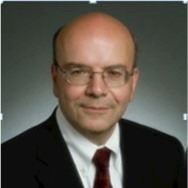Aging in place remains a major priority for many seniors who take out a reverse mortgage, using the proceeds from their loan to help make the goal of staying in their house more possible. With newly-proposed changes to the Medicare Advantage program having the potential to allow more seniors to age in place by funding some home modification programs for seniors, a new possibility for more of the elder population to remain in their homes is picking up steam.
Academic professionals see the advent of increased funding for non-medical services through these programs as nothing but beneficial for seniors who seek to remain in their homes, but it also brings cost management questions into greater focus. Those issues will need to be sufficiently addressed in order to chart a more direct path to the work that will need to be done to allow more seniors to stay in their homes for longer periods of time.
Medicare and the recognition of non-medical coverage
“I think Medicare Advantage has started to recognize that keeping people healthy involves more than taking care of their medical needs, and so we’ve seen recent policy that has allowed Medicare Advantage plans to begin to pay for some non-medical services, including home modification, transportation, etc.,” said Caroline Pearson, Senior Vice President at the University of Chicago’s National Opinion Research Center, in a phone interview with RMD.
While the ability to integrate medical and non-medical benefits will only grow in importance, the issue of funding will also become one that needs to be fully addressed before these kinds of programs can become more widespread, says Pearson.
“Right now, these are optional, supplemental benefits within Medicare Advantage that amount to a relatively small number of dollars per year for any given beneficiary,” Pearson says. “Unfortunately, many of these services are reasonably expensive. I think the current Medicare Advantage rules just don’t allow a significant investment in non-medical care, and that just might be something to consider expanding in the near future.”
Because it appears these plans are becoming more amenable to funding non-medical services like home modification, this is very encouraging for the future, says Dr. Jon Pynoos, professor of gerontology, policy and planning at the University of Southern California’s Leonard Davis School of Gerontology.
According to data from the Henry J. Kaiser Family Foundation, in 2018 one in three Medicare recipients were enrolled in private Medicare Advantage programs, for a total of 20.4 million people. Because of this, including the coverage of home modification will only be seen as a greater benefit for potential clients and customers to invest in them, says Dr. Pynoos in an interview with RMD.
“I would hope as many programs as possible adopt [this type of coverage] because it makes sense and is what people want,” Pynoos says. “I know there are probably cost considerations, but I think that if the programs see that overall, it’s what people want, and they’re competing with each other to get people to join their particular programs, a program that supports aging in place and has these kinds of features will be attractive to potential clients or customers.”
The potential for cost savings by aging in place
Due to academic research conducted by the Centers for Disease Control, there is documented evidence that indicates that home modifications, assessed by an occupational therapist and installed by a professional, can assist in reducing senior injuries related to falls and lower the costs associated with treating these injuries.
“Depending on the size of the eligible population, implementing a single intervention could prevent between 9,563 and 45,164 medically treated falls and avert $ 94–$ 442 million in direct medical costs annually,” according to a 2018 study authored by CDC researchers Dr. Judy Stevens and Dr. Robin Lee. “The interventions with the potential to help the greatest number of older adults were those that provided home modification delivered by an occupational therapist (38.2 million).”
The extent of Dr. Stevens’ and Dr. Lee’s research makes the conclusion “fairly definitive,” according to Dr. Pynoos. Still, that doesn’t mean that the researched conclusions are completely able to prevent injuries for every senior who wishes to age in place.
“It doesn’t mean that everybody who puts in a grab bar is not going to fall, it’s not one-to-one because peoples’ problems are complicated,” he says. “But, putting in those kinds of features definitely makes a difference. If you put in a stair glide or ramps that can help somebody to get in and out of the house, where [before] it was very difficult or dangerous, that’s going to have an impact on their sociability and ease of going places, including doctors.”
There are still a lot of moving parts related to these providers and programs, and their willingness to cover these non-medical expenses. Still, failing to take this kind of action could have pronounced consequences on both costs to the health care system, and the ability for seniors to age in the places they feel most comfortable, says Pynoos.
“It takes a toll on family caregivers, too,” he says. “If a family caregiver can’t continue to provide assistance, either the person is in jeopardy or other problems are going to arise that will be more costly that we could prevent.”
A solution to a growing problem
One of the reasons that this problem continues to grow is because the United States has not been creating resources for seniors at a quick enough pace to accommodate the aging population, and without the creation of more dedicated facilities with well-managed costs, aging in place could potentially serve as a way to mitigate this issue, Pynoos says.
“The growth of nursing homes has really not been very substantial,” he says. “I think the cost of nursing homes and older persons seeing them as a last resort has led us to look for other options. Assisted living is expensive, so the option for most people is to try and stay where they are for as long as they can.”
That doesn’t mean that seniors can necessarily stay in their homes permanently, Pynoos says, but that goal could become easier to achieve because of advances in technology, the creation of more programs that can allow for professional home modification, and adequate caregiving.
“If a place is designed such as to make it feasible for [seniors] to, with some assistance, carry out tasks, I think we’re going to be seeing an increasing amount of [aging in place] happening,” he says.
Home modification and reverse mortgages
Home improvement is often cited as a major reason for a borrower to enter into a reverse mortgage transaction, either in the form of a government-insured HECM or a jumbo proprietary product. A recent study also reinforced that in terms of seniors choosing where they want to age, their own homes still remain the clear preference.
Another study co-authored by Caroline Pearson also recently indicated that middle-income seniors are likely to have increasing difficulty associated with financing retirement. If more programs allow seniors to age in place while also making that prospect safer and more affordable, looking at ways to alleviate health care costs associated with aging is obvious, says Dr. Pynoos.
“It just makes common sense,” he says. “The items they’re talking about, at least initially, are not that costly. They’re preventive in a way, and I would hope they would see it as a good thing to do.”
Home upgrades made for the purposes of aging in place make for common uses of reverse mortgage loan proceeds. Late last year, reverse mortgage loan officer Pete Mendenhall, who is also a certified aging in place specialist, told RMD that he believes that financial products oriented toward aging in place – like Medicare Advantage plans or reverse mortgages – can harmoniously work together to allow seniors to stay in their homes.
“The reality is that we’re going to have people living at home because we don’t have enough beds,” he told RMD in 2018. “I think there are opportunities for everybody and I think it can be synergistic if we ask the right questions.”





